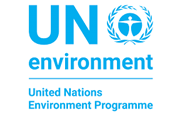The adaptation and livelihood outcomes were proposed by the community members based on the current climatic, non-climatic and human stressors in a particular setting. Adaptation, livelihoods and ecosystem planning tool (ALIVE), version 1.0[1], was adopted and modified to facilitate participatory development of Ecosystem-Based Adaptation (EbA) options for selected Gambia settlements. The tool was modified to capture the livelihoods, adaptation, ecosystems, climate change and impacts and potential ecosystem-based adaptation options. Training to the technical persons and field-based testing then followed to ensure that the technical people from different departments, who were leading the data collection exercise, understood the concepts and application of the tool.
The adaptation outcomes proposed by the community were the broader objectives that they anticipated to achieve by putting in place different EbA practices and livelihood strategies. Some of these outcomes included:
- Diversifying food sources to address food scarcity – through EbA activities such as vegetable gardening, planting drought-tolerant crops and mixed farming
- Increased conservation and restoration of forests biodiversity – through EbA activities such as assisted natural regeneration and tree nurseries development
- Restoration of degraded agricultural and farmlands – through EbA activities such as agroforestry
The communities divided
themselves into men and women groups to ranked different EbA practices in terms
of their effectiveness and feasibility based on the men’s and women’s
priorities and preferences. The two groups the congregated to develop a
resource map based collect spatial coordinates where proposed interventions can
be implemented.
[1] http://sdg.iisd.org/news/alive-tool-enables-effective-ecosystem-based-adaption/


